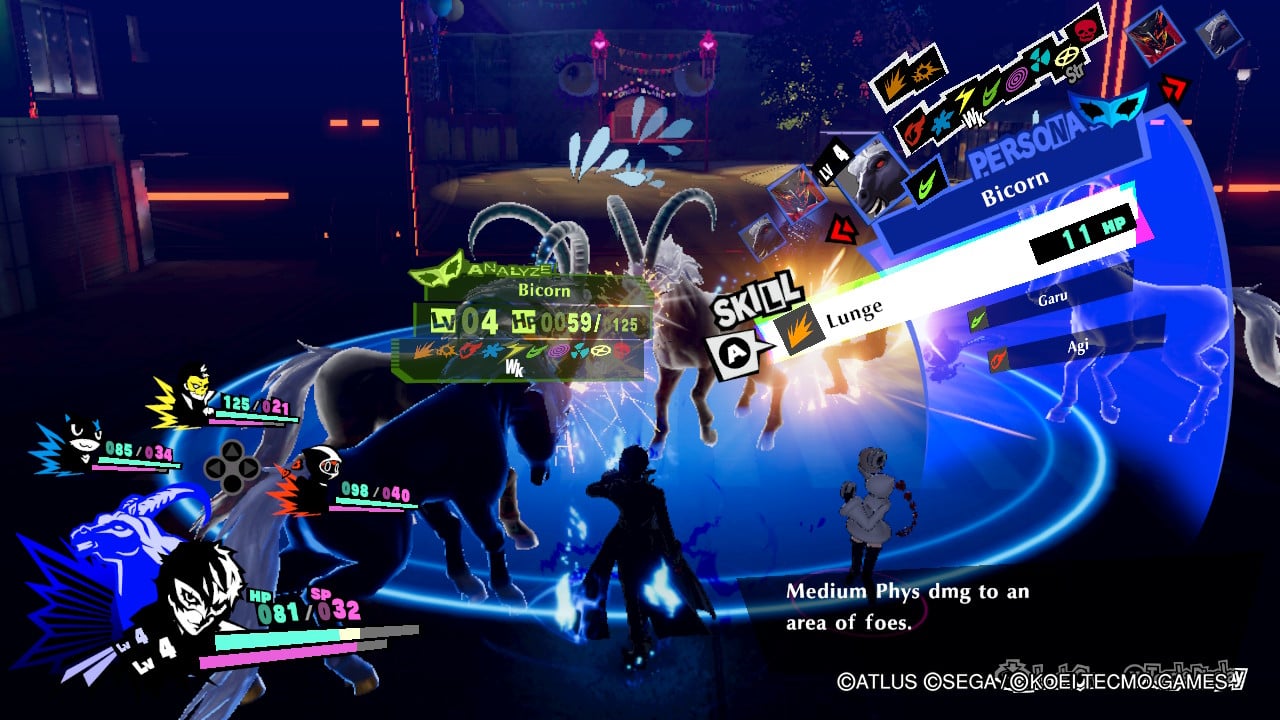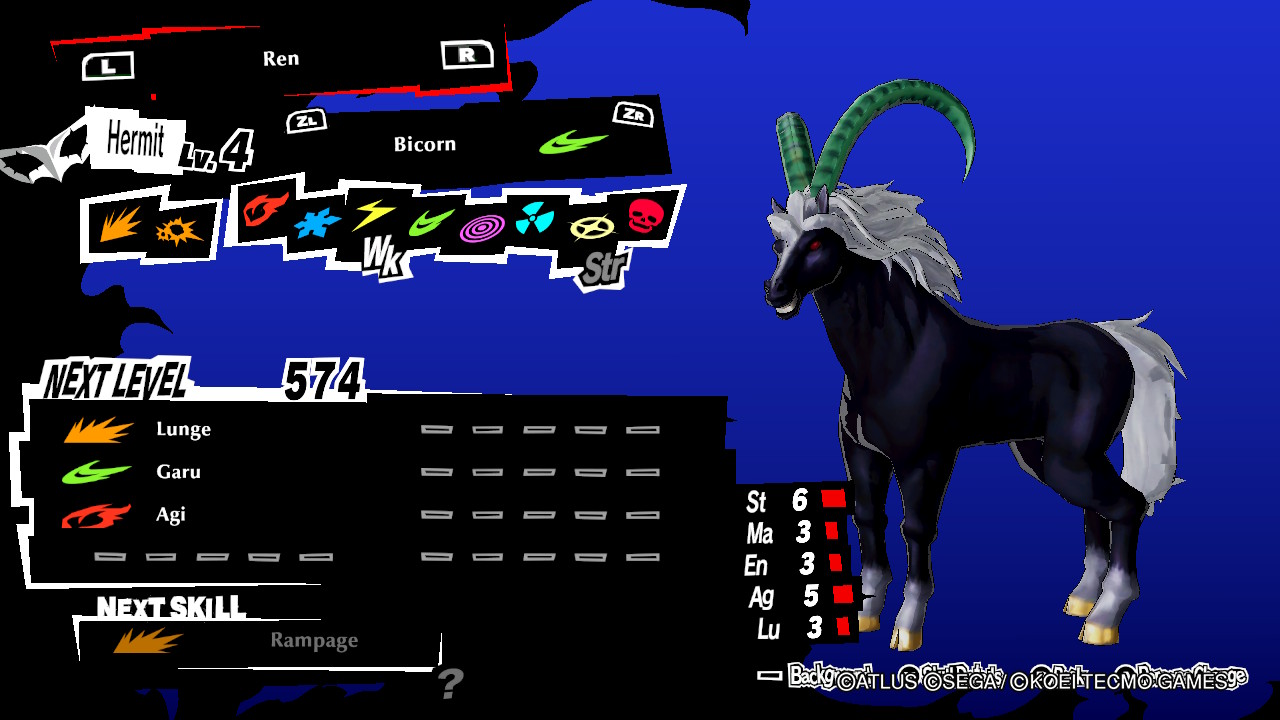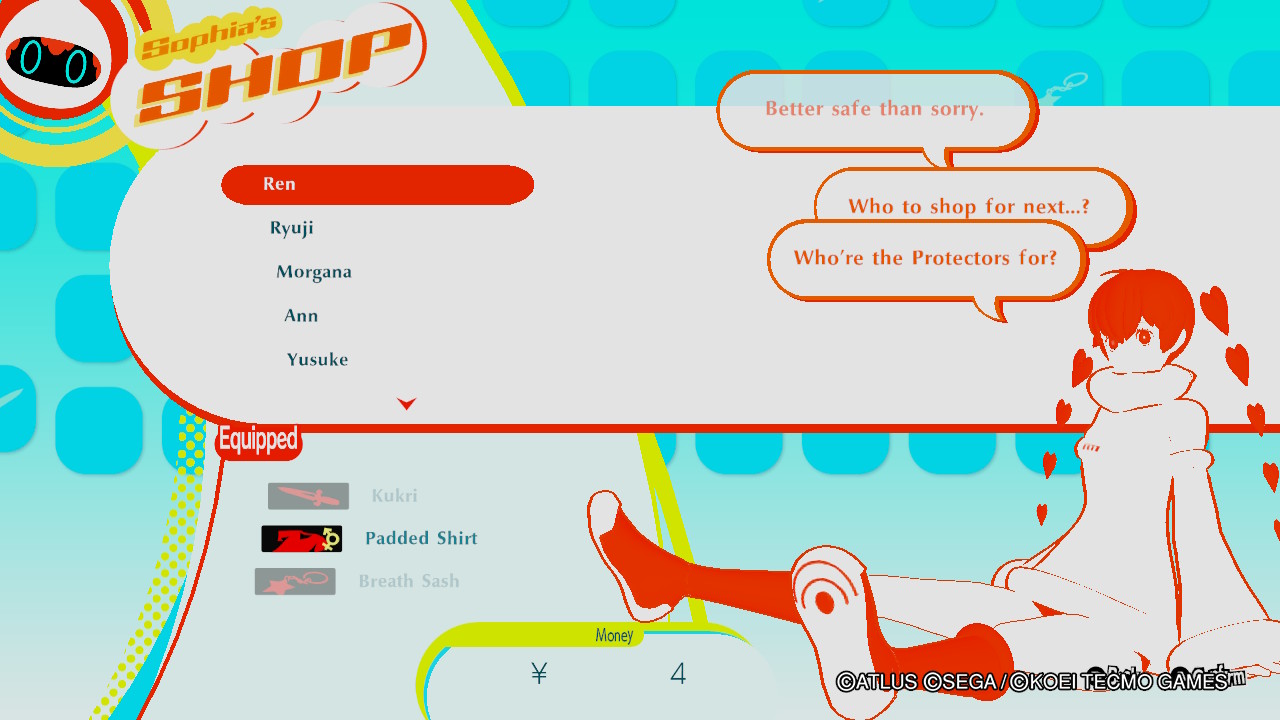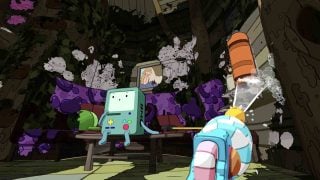Finally, the Phantom Thieves are back to steal the hearts of Nintendo Switch owners. While they’ve been spotted on the system before, infiltrating Super Smash Bros. Ultimate and Catherine: Full Body, Persona 5 Strikers marks their full-blown debut, and it’s a show stopper.
Strikers is, at its very core, a “musou” game. These hack-and-slash heavy action RPGs developed by Koei Tecmo and Omega Force got their start with the Dynasty Warriors series but have since branched out with a variety of licenses, from Gundam to Fire Emblem. Just a few months ago the studios teamed up with Nintendo to put out Hyrule Warriors: Age of Calamity, and it’s that game which shares the most in common with Persona 5 Strikers. The Zelda pseudo-prequel game didn’t simply plop Breath of the Wild’s Champions into the traditional formula; instead it tried to incorporate as much of its source material’s mechanics as possible. Likewise, Strikers is almost indistinguishable from Persona 5 outside of its real-time combat, with it featuring plenty of cutscenes, character interactions, explorable city streets, and yes, Persona management.

But first it’s worth addressing the Girimehkala in the room – Strikers is a sequel to Persona 5. The game does an admirable job of introducing the Phantom Thieves and their most basic personality traits right away, while also managing to avoid spoiling too much of the original game’s story, but it still throws you in at the deep-end. If you’re coming to Strikers to see what Joker’s deal is after using him to beat up Diddy Kong and Sephiroth, you’ll certainly be able to get by, but you might feel like you’re missing something when the cast occasionally references things like the Palaces and Kamoshida.
That said, as someone who played Persona 5, I’m thankful Strikers is a sequel. Many prior Persona spin-offs, like the Q dungeon-delvers and the Dancing games, have taken place outside of the canon, but Strikers immediately defines itself as a follow-up. The party has an established camaraderie and combat experience from the get-go, and as a result the game can explore new characters and settings instead of rehashing old ground.
Despite this sense of familiarity, don’t expect the game to get off to a roaring start. While it’s mercifully not quite as long-winded as the original release, you’ll still be sitting through lots and lots of cutscenes as the characters become aware of a new threat to the Metaverse and set out to investigate its mysterious “Jails”. It’s enjoyable stuff if you love the characters, and it’s punctuated by action-packed sequences, but don’t expect to be cutting through swathes of shadows at a rapid clip until you’re a couple of hours in, at least.

Once the gameplay does pick up, though, it’s a blast, and a lot deeper than you might expect. While the standard X and Y button combos are present and correct, a few more Phantom Thief-appropriate abilities are available too. The A button can be used to leap towards interactable objects, like lamp-posts or hanging scaffolds, and from there you have a few options. If you’re undetected, you can use the vantage point to get the first hit off in combat. Once you’re quite literally guns-blazing, the same objects become launching points for a variety of powerful combos. These options make the battlefield feel a lot livelier while also letting you indulge in some bombastic acrobatics.
The other key combat mechanics come from the Persona themselves. Holding down the R Button brings up a menu of their abilities, such as the fiery Agi attack or the physical Lunge, and the game pauses as it lets you aim and unleash them. As is typical for the Persona series, each enemy has its own strengths and weaknesses, and attacking them specifically gives you an upper hand, stunning the enemy and unlocking flashy All-Out Attacks.
As was the case in 5, Joker is a Wild Card and can collect the masks of different Persona after battle. In turn they can be used in future fights or get melded with each other, granting you a more powerful ally as a result. All of this will feel very similar to long-time fans, though levelling them up works a bit differently here.

That brings us to the party members. Even though they don’t have the customization options that come with the Wild Card ability, they each have their own strengths in battle. These manifest not only in their Persona’s abilities but also their own combat styles. If you’re familiar with other musou games you’ll know that each character or weapon type tends to have its own “gimmick”, and that’s no different here. Enigmatic newcomer Sophia, for example, uses Yo-Yo’s that can be powered up if you time your button presses correctly. Morgana, meanwhile, is super fast and can turn into his vehicle form for some finishers.
It’s worth noting that the entire returning party, plus Sophia, become playable at the same time – when you’re infiltrating the Jail in earnest. While only four are allowed on the field at any one time, it’s possible to change the line-up whenever you’re not in combat, so it can be a lot to take in. It doesn’t take long for status effects and more to crop up, either, meaning you might want to fight air on the Shibuya crossing to get a feel for each character’s quirks before taking on more imposing threats.
That covers most of the gameplay basics we’ve encountered in our playtime so far, which brings us to the other key part of Persona 5’s identity – its presentation. Needless to say, if you’ve looked at any of the screenshots posted so far, Strikers captures the vibes of the original game perfectly. Character artwork pops, the models are striking, and the menus… Let’s just say the stylish transitions are present and correct, and nothing will make you love Sophia more than her shop menu.

The Switch version also maintains a steady framerate for the most part both when docked and in portable mode, though it’s not without its drawbacks. If you’re used to seeing Persona 5 on the PS4, you’ll probably notice the lower resolution textures and general blurriness right away. In our experience, however, it doesn’t detract too much. Most of the story is delivered via static portraits, after all, and the gameplay is so frenetic that the framerate proves more vital than clean polygons.
As for the audio? It’s stellar, as is to be expected at this point. While series veteran Shoji Meguro isn’t behind the tunes, the new compositions still fit the world perfectly, and when it comes to remixes, well, very few things can claim to be as hype-inducing as the introduction of Strikers’ rendition of Last Surprise.
This praise for the audio extends to the voice work, too. The full English dub cast from the original game has returned, and they knock it out of the park across the early hours. Special mention must be given to Matthew Mercer’s return as Yusuke Kitagawa, a character whose oblivious outlook continues to be one of the most entertaining parts of Persona, and it’s only made better by the performance. Then again, Megan Taylor Harvey as Sophia might just have him beat… Her deadpan reactions have to be heard to be truly appreciated.

In many ways it feels unfair to label Persona 5 Strikers as just another musou. It strives to work as an action RPG sequel to the 2017 original, and judging from our first few hours playing, the game nails it. Needless to say, aspiring Phantom Thieves have plenty to be excited for come February 23rd.


